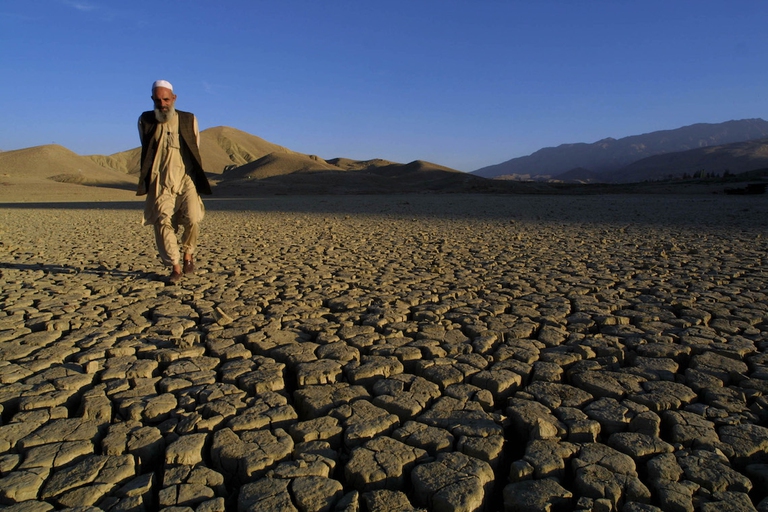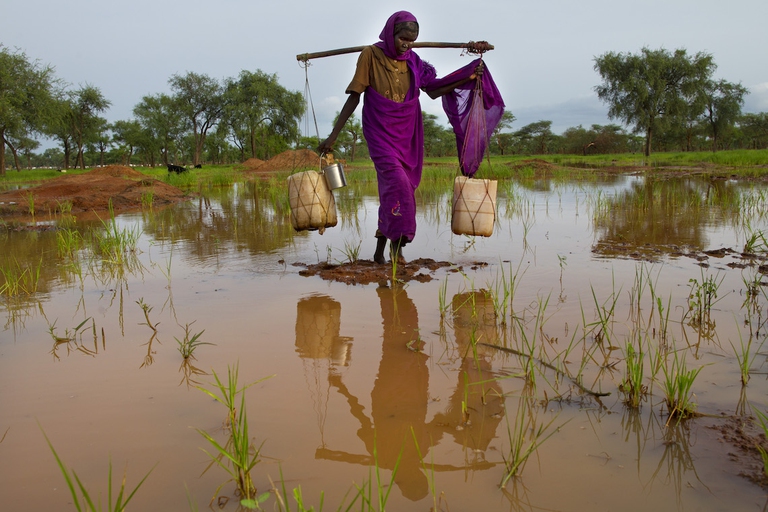
Costa Rica celebrated its first same-sex marriage when two women, Alexandra Quiros and Dunia Araya, celebrated their wedding: an “extraordinary moment”.
Secondo uno studio dell’università olandese di Twente circa quattro miliardi di persone nel mondo non hanno acqua a sufficienza per almeno un mese all’anno.
Two thirds of the world population live under conditions of severe water scarcity at least one month of the year. This means 4 billion people are affected, out of a total of about 7.4 billion people, and most of them live in China and India (the world’s two most populated countries).
This dreadful figure has been revealed in a study published by the American Science Advance magazine, which also shows that 500 million people in the world face severe water scarcity all year round. The calculation has considered as “facing severe water scarcity” those areas where the demand is twice the supply.
There’s more: the world’s demand for freshwater is likely to significantly increase over the next decades, said the study’s leading authors, Mesfin Mekonnen and Arjen Hoekstra of the University of Twente, Netherlands. This is mainly due to demographic growth, improved living conditions and the increase in water resources in agriculture.
Despite most of people that will face water scarcity mainly live in China and India, the Dutch analysis points out other areas at risk, in different seasons of the year: Bangladesh, Pakistan, Nigeria, Mexico, and the United States (especially California, Texas, and Florida).
The Food and Agriculture Organization of the United Nations (FAO) explained that due to climate change “a combination of reduced river base flows, flooding and rising sea levels are predicted to affect highly productive irrigated systems dependent upon glacier melt (like the Punjab and Colorado) and lowland deltas (such as the Indus, Nile, and Brahmaputra-Ganges-Meghna – the world’s most densely populated delta)”.
The report eventually highlights the need of implementing measures aimed to prevent such problems. Namely, limitations to water exploitation in river basins, an increased efficiency, and a better resource management: these factors were considered decisive to reduce risks jeopardising not only human beings, but also biodiversity.
Siamo anche su WhatsApp. Segui il canale ufficiale LifeGate per restare aggiornata, aggiornato sulle ultime notizie e sulle nostre attività.
![]()
Quest'opera è distribuita con Licenza Creative Commons Attribuzione - Non commerciale - Non opere derivate 4.0 Internazionale.
Costa Rica celebrated its first same-sex marriage when two women, Alexandra Quiros and Dunia Araya, celebrated their wedding: an “extraordinary moment”.
On top of a 2.4 million dollar compensation, the indigenous Ashaninka people will receive an official apology from the companies who deforested their lands in the 1980s.
Over 560 billion litres (150 billion gallons) of water from Lake Okeechobee in the US state of Florida have flewn into the delicate ecosystems of the St. Lucie River and Indian River Lagoon since January 2016. This has caused an explosion in the blooming of blue-green algae, also called cyanobacteria, which can be dangerous to human and
From Italy to the United States, workers in the logistics and delivery sectors are protesting to demand better sanitary conditions to protect themselves from Covid-19.
The pandemic and its restrictions are affecting everyone, without exceptions. However factors like housing, income inequalities, gender, access to technology and working conditions are influencing how people experience the health crisis.
In the midst of India’s coronavirus lockdown, two dozen people lost their lives in a desperate bid to return home: migrant labourers forced to leave the cities where they worked once starvation began knocking at their doors.
Apple, Dell, Microsoft and Tesla are among the tech companies named in a lawsuit brought in the US by the families of children killed and maimed in cobalt mining activities in the Democratic Republic of Congo.
We, the people is Survival’s 2020 calendar, which features the winners of the photography contest showcasing images of the world’s indigenous peoples.
Un violador en tu camino – the rapist is you – is an anthem protesting the impunity of gender-based violence. It began in Chile and has become a global flash mob, bringing people to the streets and resonating all over the world.









